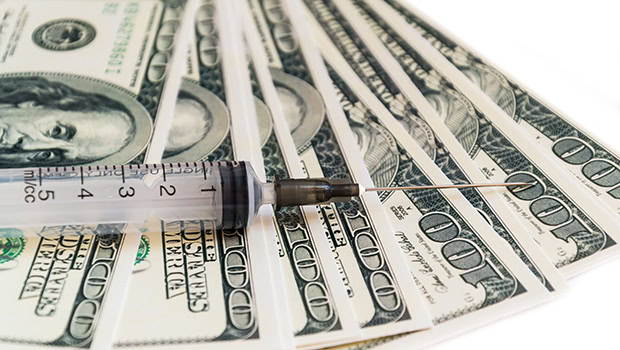U.S. Pays Much More Than UK for Insulin
People with diabetes in the U.S. are paying between 5.7 times and 7.5 times more than those in the UK for popular insulins

A new study finds that people with diabetes in the U.S. are paying between 5.7 times and 7.5 times more than those in the UK for two popular insulins and a rare drug to treat diabetic retinopathy. U.S. consumers absorb this higher cost despite often not being the first in line to have access to new drugs or medical device treatments.
According to a Reuters report, researchers from the University of Liverpool (UK) analyzed the drug prices for 20 top-selling drugs worldwide, including Sanofi’s Lantus, Novo Nordisk’s NovoRapid insulins, and Roche’s Lucentis, a macular degeneration drug recently approved by the FDA to treat diabetic retinopathy. U.S. consumers ended up paying 5.7 times more for Lantus, 7.5. times more for NovoRapid, and 7.5 times more for Lucentis than their UK counterparts, according to a chart published by the Daily Mail (UK).
The average price difference of the Top 20 drugs sold was 3 times higher in the U.S than in the UK. The gap between drug prices in the U.S. and prices in other industrialized countries is even greater – 6 times higher than in Brazil and 16 times higher than in India, for example. That difference comes mostly because other countries implement price controls, while the U.S. usually allows the market to set prices, according to a Reuters report.
In the report, representatives of the pharmaceutical industry pushed back against the study, saying that the market price for a drug is often not the one paid by the consumer, as many insurers demand a deep discount. In 2014, for example, Sanofi’s then-CEO Chris Viehbacher warned that sales for Lantus might flatline as insurers would demand discounts in 2015 for the popular basal insulin.
A pharmaceutical industry representative pointed out in the Reuters article that some 90 percent of drugs prescribed in the U.S. are cheaper, generic versions of name-brand drugs. However, drug companies will sometimes block the development and sale of generics. Sanofi, for example, has been involved in a protracted legal war to block the sale of generic formulations of Lantus, and only recently settled with Eli Lilly and Co. to allow a generic version of Lantus to be sold at the end of 2016. The court battle and settlement has bought Sanofi time to try to establish its new basal insulin, Toujeo, in the marketplace.
U.S. critics of the pharmaceutical industry contend that U.S. consumers are being forced to subsidize the research and development costs of drugs for the rest of the world, according to the Reuters report. That criticism might resonate with the Type 1 diabetes community in the U.S., as many diabetes advocates have been frustrated with how new diabetes treatments are often available in other parts of the world before they are available in the U.S. For example, Novo Nordisk’s new basal insulin, Tresiba, has been available for months in much of Europe and Japan, but only recently received FDA approval this past month. The flip side to this, however, is that earlier access to new treatments sometimes results in higher risk of injury and death for the end user, and European regulators are even calling for better safety standards for new technological fixes for diabetes.
U.S. drug prices are facing increasing scrutiny by U.S. politicians and regulators following widespread public outrage after a company hiked the price of a 62-year-old drug to treat a parasitic infection. Turing Pharmaceuticals bought up the drug, Daraprim, and immediately raised its price from $13.50 to $750 a tablet. The Reuters report might provide more ammunition for a populist call to regulate drug prices in the coming U.S. presidential election cycle.